How the cult comedy horror film “Tremors” was created (9 photos)
At first no one believed in this project, and the film studio allocated a very modest budget. However, the film quickly became a cult classic and received a lot of sequels of varying degrees of success. And in our country it actually became a video hit. Moreover, the low-budget horror film rebooted the fading career of actor Kevin Bacon. 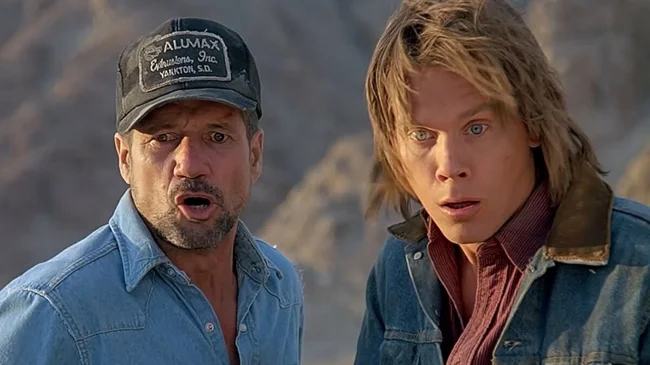
The idea for a horror film about underground monsters that react to vibrations came to screenwriter S.S. Wilson while vacationing in the desert. He sat on a rock and suddenly imagined how he would flee from giant worms if only rocks remained safe. The playwright quickly compiled his ideas into a script and took it to Universal Studios. 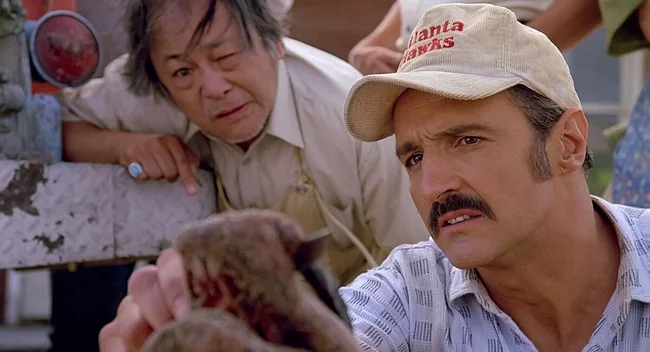
Film bosses noted the originality of the idea with underground worms. But they were not happy with the script itself. Some people didn't like the plot. Others complained that it would take a lot of money to create monsters. Still others advised the screenwriter to decide on a genre. They say your work is either horror or comedy. 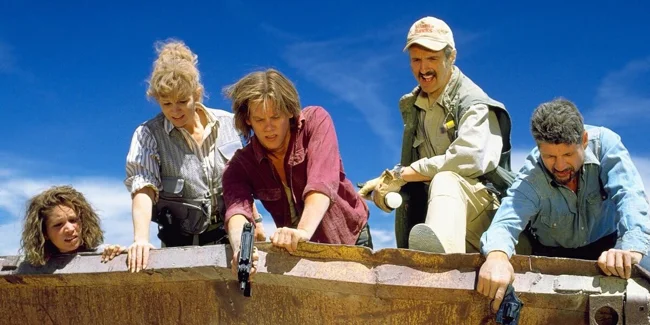
Luckily, the text caught the eye of a clever producer named Gale Anne Hurd. At that time, she was the wife of the rising director James Cameron and produced his films. The woman quickly assessed the potential of the project and was able to extract a small budget of $11 million from the film bosses. 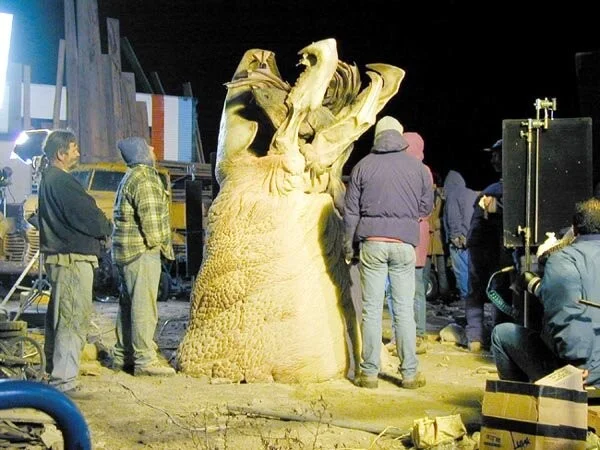
This amount was quite enough to create simple special effects. But for substantial fees to the stars - no longer. But Hurd solved this problem too. There were no stars in the film. The rather famous, but not very successful actor Kevin Bacon was invited to play the main male role. The artist then starred in several failed projects in a row. It seemed that his career was nearing its end.
At that moment, the actor was in dire need of money. Kevin's wife was pregnant and his mother was seriously ill. And he was ready to star in anything. Even in low-budget nonsense. But who would have thought that a comedy horror film would turn his film career back. Although the actor himself was shocked at first. “What a shame: I’m starring in a movie about some kind of underground worms,” the artist lamented. 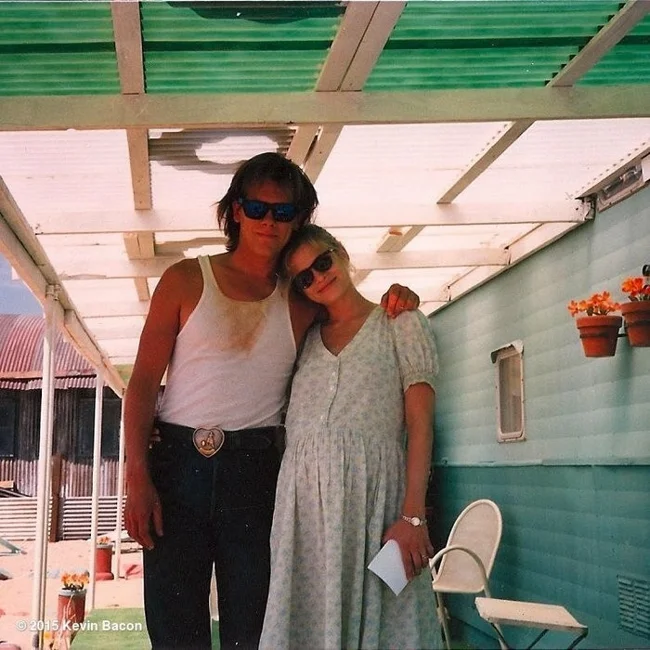
Bacon and his wife on the set of Tremors
Country singer Reba McEntire was also called in to attract the audience's attention. She played the wife of hunter Burt Gummer. At the casting, the woman was given a kind of test. They gave her a rifle and watched how she handled the weapon. And Riba showed herself perfectly. For the sake of the film, she even postponed her own honeymoon. Fred Ward as the hero's partner Bacon and the inimitable Michael Gross as Gummer successfully fit into the project.
Filming started in May 1989. Almost all the necessary scenes were filmed on the Lone Pine Indian Reservation, located in east-central California. For a couple of months, the filmmakers built the scenery of the town of Perfection and placed artificial boulders. At the end of filming, local residents stole it all. 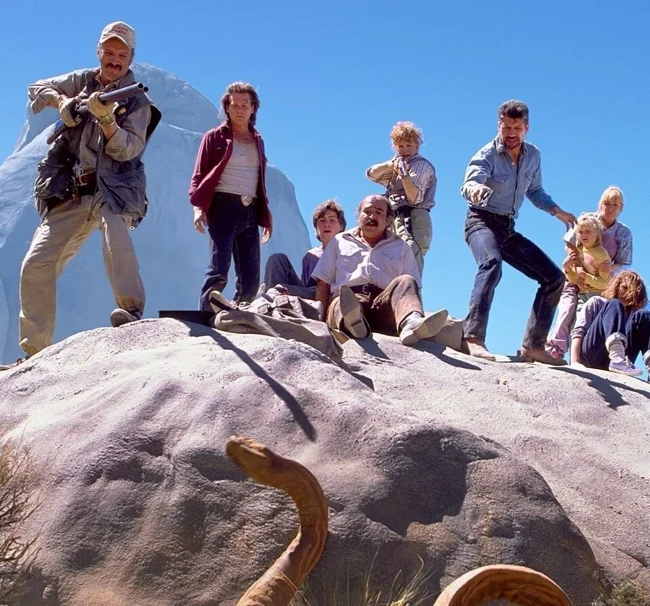
When creating underground monsters, they were guided by fauna that actually exists in nature - elephants, crocodiles, rhinoceroses, catfish and... slugs. But real earthworms were not even considered as prototypes. Special effects artists found them too boring and unscary.
Graboids were given a massive, shell-covered body and a pointed, armored head with a beak and tentacles. Four full-scale head models and one body mannequin were constructed. The 2.5 meter long head segments were built on an internal aluminum frame. The skin was made from foam latex. The beak and jaws are made of high-strength fiberglass. 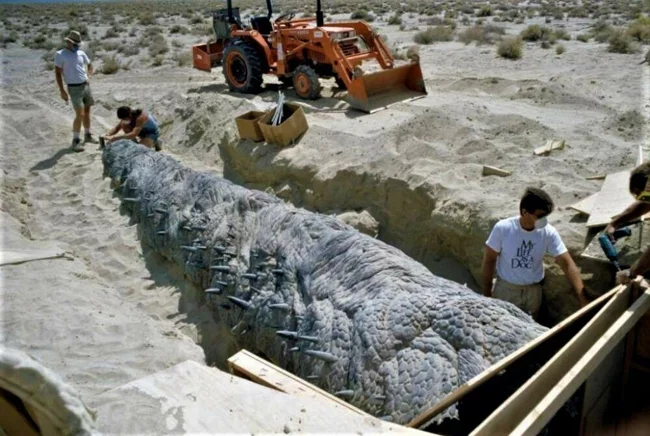
Mechanical mock-ups of worms were placed three meters deep in pre-dug trenches and pulled through using cables. The top of the trench was sprinkled with sand. The operators controlled the movements of the monsters remotely. True, some of them still had to sit in the trenches and manage the mock-ups on site. Full-size monster models were only needed in a few scenes. Basically, they used miniature dolls and mock-ups of tentacles.
Those who watched the film probably remember the episode where Rhonda got entangled in barbed wire and had to get rid of her pants in order to survive. Actress Finn Carter refused to rehearse this scene. She insisted that everything look natural—her fear, her convulsive desire to escape, and the scratches. As a result, the scene was filmed the first time.
But we suffered a lot during the filming of the climactic scene, when the last graboid crashes into the abyss. The episode took a whole day and nine takes. We used a full-size polyurethane mock-up of the monster. “Product number two” with orange paint was fixed inside it and the worm carcass was lowered down.
The products were purchased in bulk from a local pharmacy, which caused considerable surprise (and respect) from the staff. The worm carcass fell anywhere. But just not where it was needed. When they hit the ground, the paint balls naturally burst. As a result, after each unsuccessful take, the carcass was opened, cleaned, and washed. They filled the insides again with paint and sewed them up. This continued until the scene was filmed properly.
The episode where the monster drags the car underground was also labor-intensive. The scene was filmed last, when the main work was already completed. For this purpose, they specially dug a hole that could accommodate the entire car. They installed an elevator mechanism there. But while diving, the car suddenly got stuck. As a result, they gave up and simply left most of this enchanting episode behind the scenes.
When Tremors was released, it was barely able to recoup production costs. But on video, the film became a real hit and brought good dividends to the film studio. Several sequels were made. There was even a TV series. But none of the sequels could match the popularity of the first part. Personally, I still watch this crazy movie from time to time. With pleasant nostalgia, remembering the crowded video stores and monophonic, nasal translations of the times of my youth.
